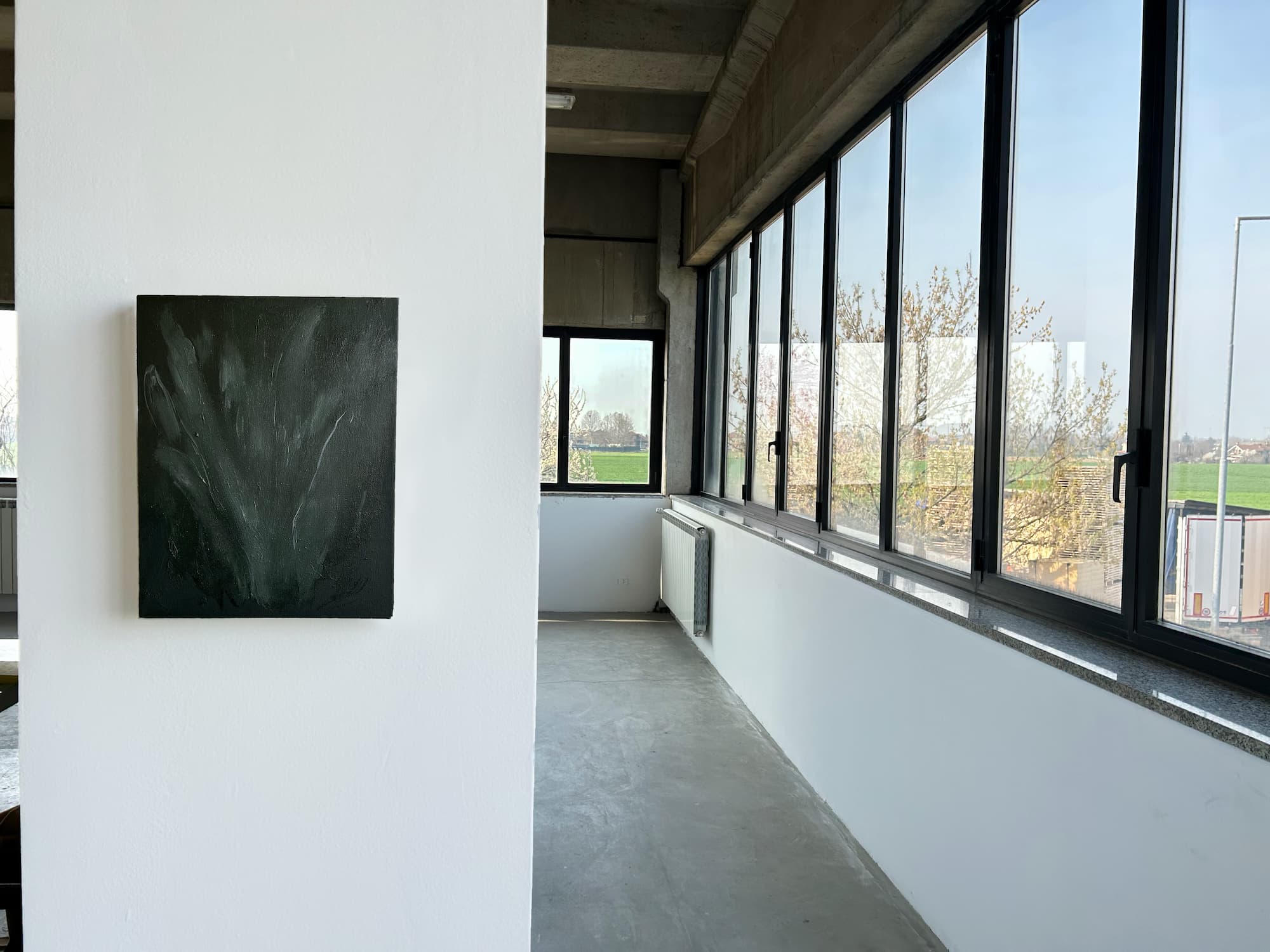NON CI SONO
FANTASMI
Lorena Bucur & Arianna Zama


25/02/2023 – 23/03/2023
Fuocherello presents There Are No Ghosts, an exhibition by Arianna Zama (Lugo, 1998) and Lorena Bucur (Cremona, 1996). The exhibition project gives shape to the transformation of an archive, from personal to collective, abandoning the walls of the mind to place itself on those of the space. The work of the two artists is characterized by the research, production, and preservation of images, never truly complete; glimpses of vegetation and pieces of bodies haunt the walls and remain silently observing us, filling the space with presences.
In the pictorial works created by Zama, we get to know the artist’s own imagination, steeped in mythological, literary, and historical associations, as in the case of Anne Boleyn, and elements from an elusive reality that never existed. Parts of bodies and vegetation emerge from tones reminiscent of the fog and marshes of Romagna, her birthplace. Despite Zama’s paintings being small in size, the figures do not appear discreet; female faces and monstrous grimaces claim the walls. The small canvases intrigue the viewer and encourage them to come closer, but the marks on the painted surface destabilize and repel. Thus, they prompt a visit that turns into a dance, of steps forward and backward, seeking to capture fleeting glances. The pictorial compositions are characterized by layers and shades of extreme delicacy and essential brushstrokes that outline recognizable facial elements, such as eyes and mouth. The portraits are the starting point for a narrative made of fragments and constructed only retrospectively. The subjects are barely readable, like a memory abandoned to time, leaving the viewer the possibility to create a new story, drawing from their own memories and mingling in a duet with those of the painter. The focal point continuously shifts between the narrative and its representation, giving us a plaza rich with decapitated heads, as in Revolutionary France.
If Zama’s works present us with an archive of severed heads, with Bucur we encounter an archive of astigmatic photographs. Postcard bricks is a series of shots taken with an analog camera and subsequently developed on 10×15 cm cement slabs, as the title suggests, postcard-sized and reminiscent of construction bricks. The two-dimensional surface of the photograph expands into sculptural three-dimensionality, transforming the image into an object. Although the gray of the cement weighs on the lightness of the captured elements and the brilliance of the photograph, the material’s concreteness instead gives sculptural gravity to fragments of a timid nature, making it the protagonist and creating a visual oxymoron. While cement is a typical material in construction and symbolically, along with petroleum, represents the anthropization and domination of the earth by humans, for the artist, this material strongly evokes femininity. Cement, in fact, completes its hardening phase after 28 days, and it is the main material for construction (like the bricks previously mentioned), including, of course, houses. The house, in capitalist and patriarchal society, is symbolically associated with women, as it is a place of care and family custody.
Thanks to the material, Bucur’s slabs acquire the absolute opacity of cement and a smoothness that gives them a noteworthy tactile allure. The small photographed vegetal elements become for the artist what stands out most in a panorama of urban asphalt. Like tiny blades of grass cracking the cement and asphalt of the streets. Bucur thus invites us to reflect on the visual overcrowding of our era, forcing the viewer to pay attention to what lies in the background, to objects overlooked by the eye, like plants and weeds in roundabouts, in Gilles Clément’s famous third landscape.
Upon entering the exhibition space, we instinctively linger to observe Arianna Zama’s works, but Lorena Bucur’s slabs divert us from centrality, visible in this exhibition and historically held by wall-mounted paintings, urging visitors to focus on details. With few exceptions, Bucur’s slabs are found in the more peripheral areas of the exhibition space, along the stairs, very low on the walls, conditioning the viewer’s posture, literally forcing them to bend to the will of her works. This compels them to assume an equal position towards these objects; of essentially humble material and representation. With Postcard bricks Bucur infiltrates the landscape, nature in its less iconic forms, into architecture, and Zama populates it.





